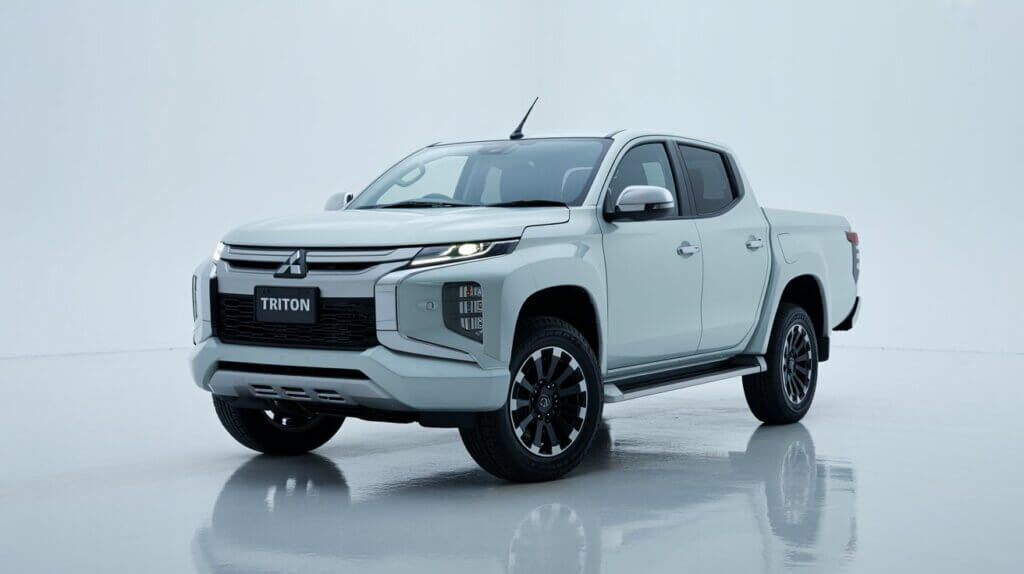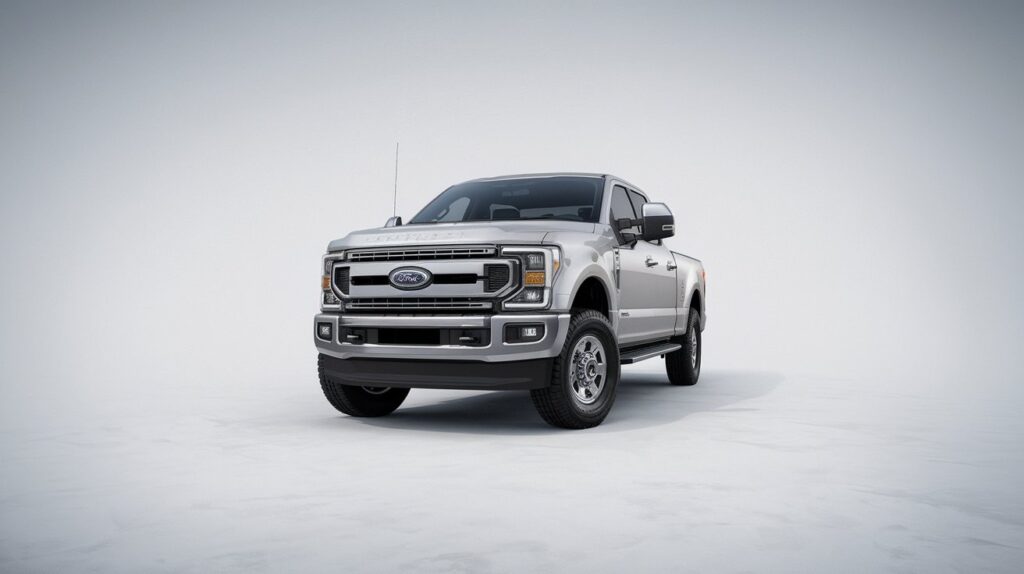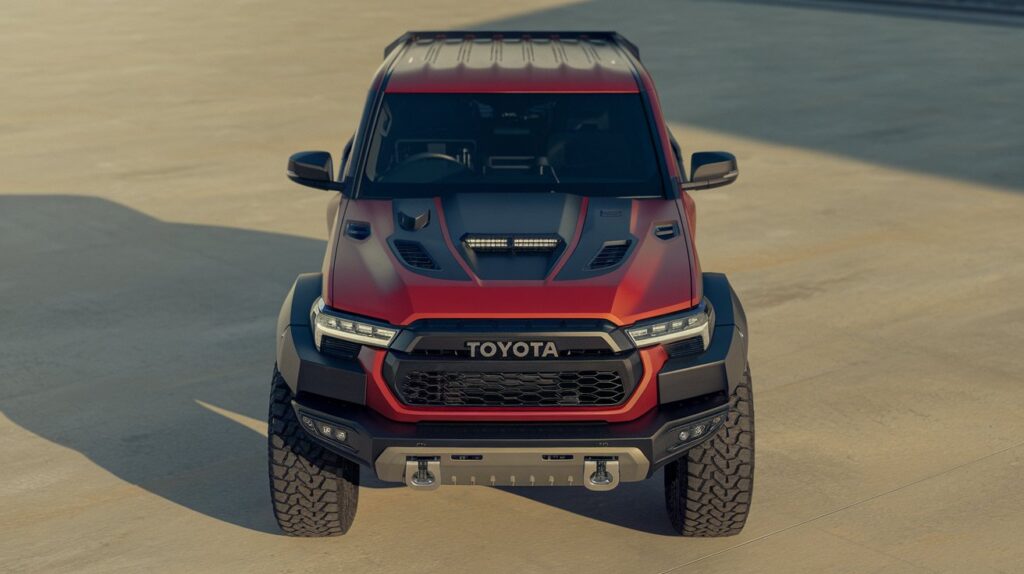The midsize pickup segment has seen a significant evolution over the past few years, with consumers demanding more capability, more tech, and a more refined driving experience. Mitsubishi has responded in kind with the 2025 Mitsubishi Triton, a comprehensive overhaul of its longstanding workhorse. Confirmed by Mitsubishi Motors Global News, the sixth-generation Triton is officially on sale in multiple markets, including Australia, Thailand, and other parts of Asia and Europe.
This global pickup—also known as the L200 in some regions—has undergone transformative changes, from a bold, new exterior to significantly upgraded drivetrains and a tech-savvy cabin. Whether you’re a tradesperson, overlanding enthusiast, or a lifestyle-focused driver, the new Triton is engineered to meet a broader range of use cases than ever before.
A Ground-Up Redesign that Signals Serious Intent
Mitsubishi hasn’t taken any shortcuts with this model. The 2025 Triton rides on an all-new platform, part of the Renault-Nissan-Mitsubishi Alliance’s modular chassis initiative. The new underpinnings offer not just improved rigidity and crash performance but also smoother ride quality and greater design flexibility.
Visually, the Triton is a commanding presence. The front fascia adopts Mitsubishi’s updated “Dynamic Shield” language, delivering an aggressive, futuristic appearance with sleek LED lighting and a more sculpted grille. Bulging wheel arches, a higher beltline, and modern tailgate styling collectively position the Triton as a premium yet utilitarian contender in its class.
Dimensionally, it’s larger in almost every direction than the previous model—particularly in length and width—offering more interior space and a sturdier visual stance. That makes it not just more comfortable for passengers but also more stable when hauling heavy loads or tackling uneven terrain.
Engine and Performance: Bi-Turbo Diesel Delivers Power and Precision
Under the hood is where the Triton makes arguably its most critical improvement. The newly developed 2.4-liter bi-turbo diesel engine delivers up to 201 horsepower (150 kW) and 470 Nm (347 lb-ft) of torque, placing it firmly in the conversation alongside rivals like the Ford Ranger and Toyota Hilux.
These output gains translate into:
- Top Speed: Approx. 180 km/h (112 mph)
- 0–100 km/h: Around 10.5 seconds, depending on variant and load
- Transmission: Recalibrated six-speed automatic or six-speed manual
Notably, the Super Select 4WD-II system with selectable terrain modes (Mud, Sand, Snow, Gravel, and Rock) gives the Triton a serious off-road toolkit. Add to that a locking rear differential and hill descent control, and you have a truck that can genuinely go anywhere.

Fuel Efficiency and Emissions
The bi-turbo diesel engine is also designed with efficiency in mind. Real-world consumption figures vary by configuration, but estimates put it between 7.8 to 8.5 L/100km, which is competitive with other midsize diesel pickups. Mitsubishi’s updated engine calibration and lighter architecture help reduce CO₂ emissions, aligning with tightening global environmental standards.
Trim Levels and Cabin Features: From Rugged to Refined
Buyers have a wealth of choices with the 2025 Triton. Available in single cab, club cab, and double cab configurations, the Triton caters to both commercial and private buyers. Trim levels range from the utilitarian GLX to the feature-rich Triton Athlete variant.
Standard features even on base models include:
- USB-C charging ports
- Rearview camera
- LED lighting
- Improved fabric upholstery
Moving up the range unlocks:
- 9-inch infotainment touchscreen with wireless Apple CarPlay and Android Auto
- Wireless smartphone charging
- Dual-zone climate control
- Keyless entry and push-button ignition
- Leather seats with orange contrast stitching
- Digital driver’s display
The cabin is not only more spacious but also more refined, featuring better materials, improved sound insulation, and ergonomic enhancements. It’s clearly designed for people who plan to spend long hours behind the wheel.
Safety First: Enhanced Protection and Driver Assistance
The Triton is no longer just a tough truck—it’s a smart one too. Mitsubishi has outfitted it with seven airbags and an extensive array of advanced driver assistance systems (ADAS):
- Forward Collision Mitigation with pedestrian detection
- Blind Spot Warning and Lane Change Assist
- Adaptive Cruise Control with stop-and-go
- Lane Departure Prevention
- Rear Cross Traffic Alert
- Driver Attention Alert
The new platform also includes crumple zones and a reinforced safety cell. These features are designed to help the Triton secure top ratings from ANCAP and ASEAN NCAP.
Cargo Bed, Payload, and Towing Capacity
Utility hasn’t been sacrificed for style. The Triton remains a true workhorse with:
- Payload capacity exceeding 1,100 kg (2,425 lbs)
- Braked towing capacity of 3,500 kg (7,716 lbs)
The truck bed has been re-engineered to be wider and deeper, making it easier to carry bulky items. The inclusion of integrated rear bumper steps is a simple but impactful addition for day-to-day practicality. Rear suspension tweaks—such as longer leaf springs and new dampers—improve both ride comfort and load control.
Connectivity and Infotainment: Finally Up to Date
For years, Mitsubishi lagged behind in the infotainment department, but that’s no longer the case. The 2025 Triton sports a fast, intuitive interface with OTA update support, allowing the truck to stay current without needing a service visit.
You’ll also find:
- A surround-view monitor with off-road angles
- Turn-by-turn navigation on the digital cluster
- Smartphone integration that actually works seamlessly
While it doesn’t quite match Ford’s SYNC 4 or Toyota’s latest UI, the Triton’s infotainment is finally a strength rather than a liability.
Ride and Handling: Balanced for Work and Weekend
The new platform brings significant gains in handling, particularly when the bed is empty. Body roll is well-contained, and the electric power steering is light enough for city use but stable at highway speeds.
Curb weight ranges from around 2,030 kg (4,475 lbs) to 2,300 kg (5,070 lbs) depending on configuration. Thanks to extensive use of high-strength steel and thoughtful chassis tuning, the Triton feels solid without being cumbersome.
Pricing: Positioned to Undercut Rivals
In the Australian market, pricing begins at approximately $43,690 AUD for the base GLX and stretches to $63,840 AUD for the Triton Athlete. Given the equipment levels and capabilities, this pricing strategy positions the Triton as a value-driven competitor.
U.S. availability remains off the table for now, though speculation continues about Mitsubishi re-entering the North American pickup market through partnerships or badge engineering. That said, Mitsubishi has successfully aimed this product at core markets where pickups remain essential.
If you’re exploring the full Mitsubishi lineup, check out our 2025 Mitsubishi Sapporo guide for in-depth specs, features, and performance insights.
Broader Market Impact and Trends
Global pickup buyers are increasingly demanding vehicles that can serve dual roles: rugged utility vehicles that also offer the comforts and connectivity of a crossover. The 2025 Triton embodies that shift perfectly.
Its new identity is less about brute force and more about balanced capability. Whether you’re hauling in a mining operation or commuting to work in urban Australia, the Triton meets the brief. Plus, the shift to a modular platform prepares Mitsubishi for potential hybridization or EV adoption in future models.
And let’s not forget Mitsubishi’s return to performance storytelling. Fans nostalgic for the brand’s past glories will love our full 2025 Mitsubishi 3000GT VR4 review—unveiling its performance upgrades and future potential.
Pros and Cons
The 2025 Mitsubishi Triton impresses with its new design, powerful diesel engine, and comprehensive suite of tech and safety features. Its towing and payload ratings are top-tier, and the improved ride quality makes it a realistic daily driver. However, the infotainment—though significantly improved—still lags behind market leaders, and the absence of a North American version limits its global impact.
Conclusion: Mitsubishi’s Comeback Kid
The Triton has undergone a transformation that’s hard to ignore. With smart engineering, bold styling, and real-world functionality, the 2025 Mitsubishi Triton is a true renaissance for the brand’s global pickup strategy. Whether you’re looking for a tough workmate or a weekend warrior, it’s now a top contender worth your consideration.
FAQ: 2025 Mitsubishi Triton
Is the 2025 Mitsubishi Triton officially released? Yes, Mitsubishi officially launched the 2025 Triton in 2023 for markets including Australia, Thailand, and other Asia-Pacific regions.
What engine does the 2025 Triton use? It features a newly developed 2.4-liter bi-turbo diesel engine, producing up to 201 hp and 470 Nm of torque.
What is the fuel economy of the 2025 Triton? Fuel efficiency is estimated between 7.8 and 8.5 L/100km depending on the drivetrain and usage scenario.
Does the new Triton have 4WD? Yes, the Super Select 4WD-II system is available on select trims, offering terrain-specific drive modes and a locking rear diff.
How much can the Triton tow? It can tow up to 3,500 kg (7,716 lbs) with a braked trailer, aligning with class-leading competitors.
Is the 2025 Triton available in the United States? Not currently. Mitsubishi has not announced U.S. plans, focusing instead on Asia-Pacific and European markets.
What tech features are included in the new Triton? The Triton includes wireless smartphone integration, a 9-inch touchscreen, OTA updates, digital gauges, and more.
How much does the 2025 Triton cost? Pricing in Australia starts at approximately $43,690 AUD and climbs to around $63,840 AUD for top-tier trims.
How does the Triton compare to the Ford Ranger? The Triton offers strong towing, great off-road ability, and better value in some trims, though the Ranger has more premium options.
Is the 2025 Triton good for off-road driving? Absolutely. With terrain modes, 4WD, improved ground clearance, and a robust frame, it’s well-suited for tough trails and work sites.

